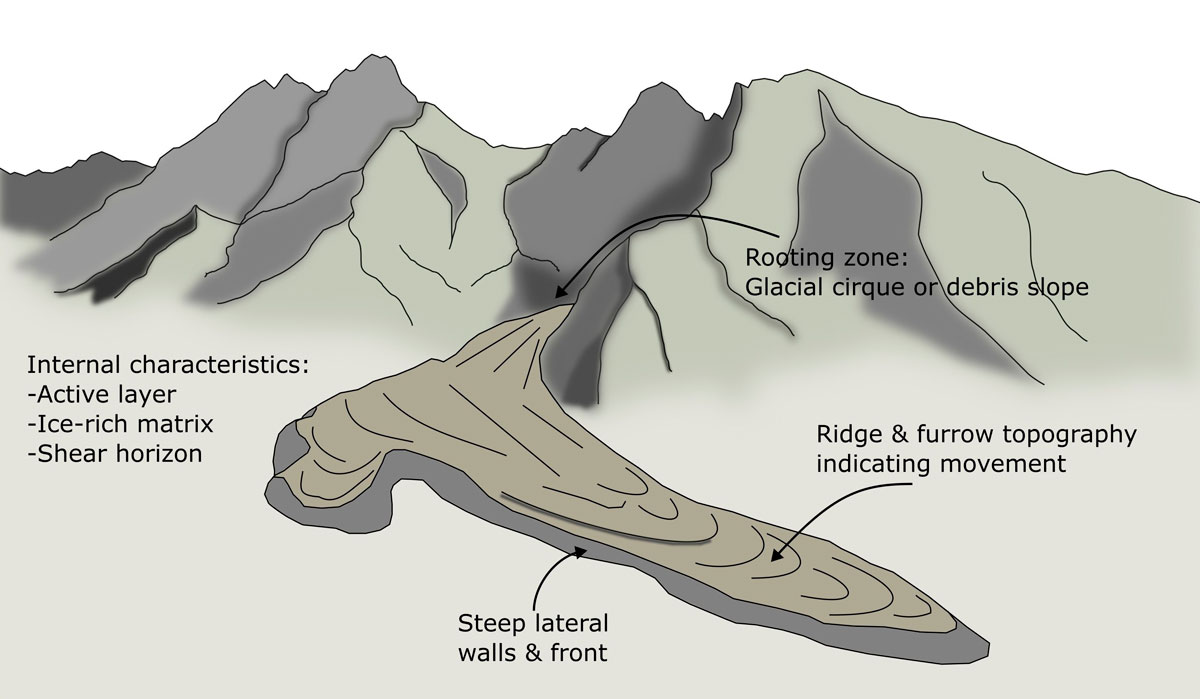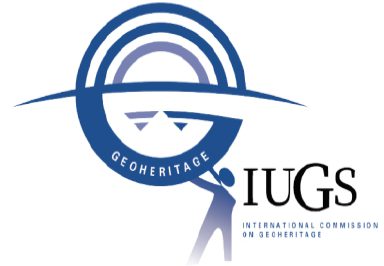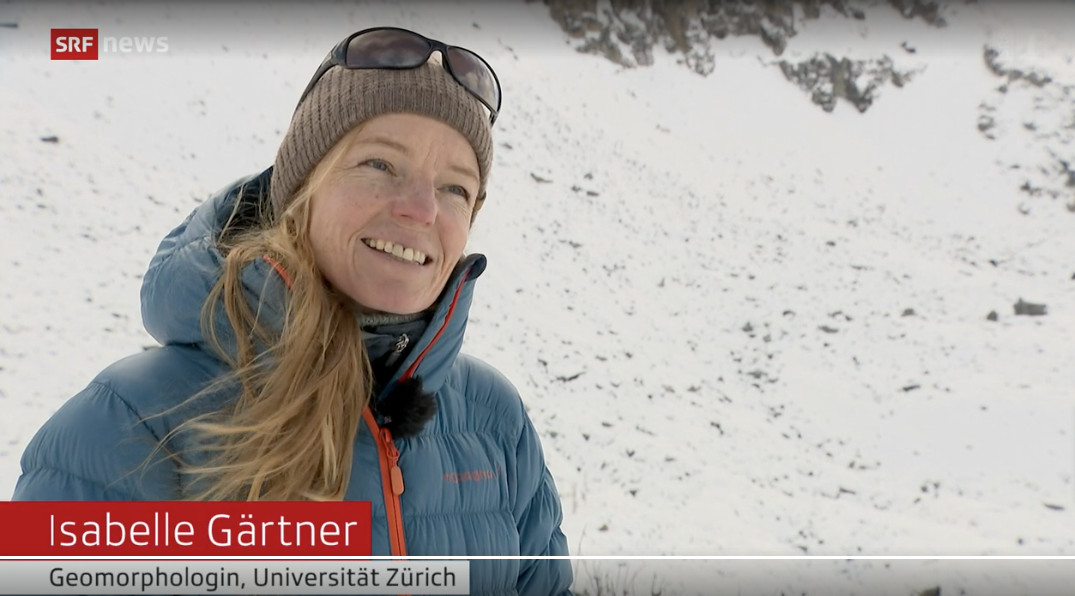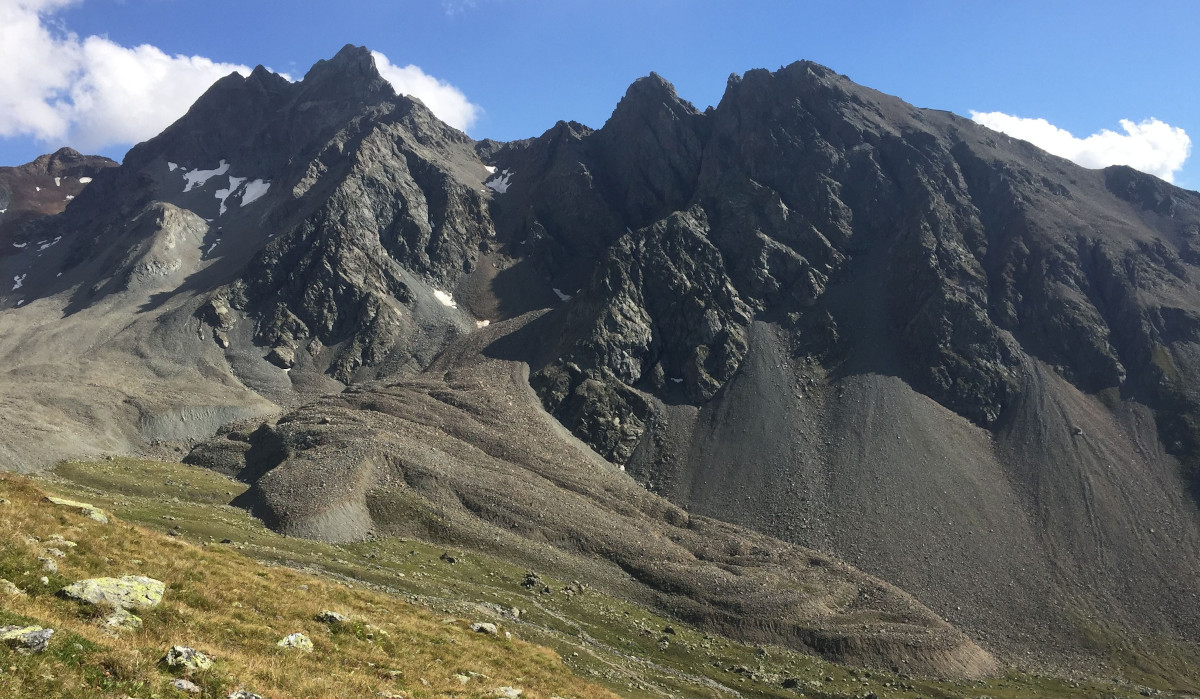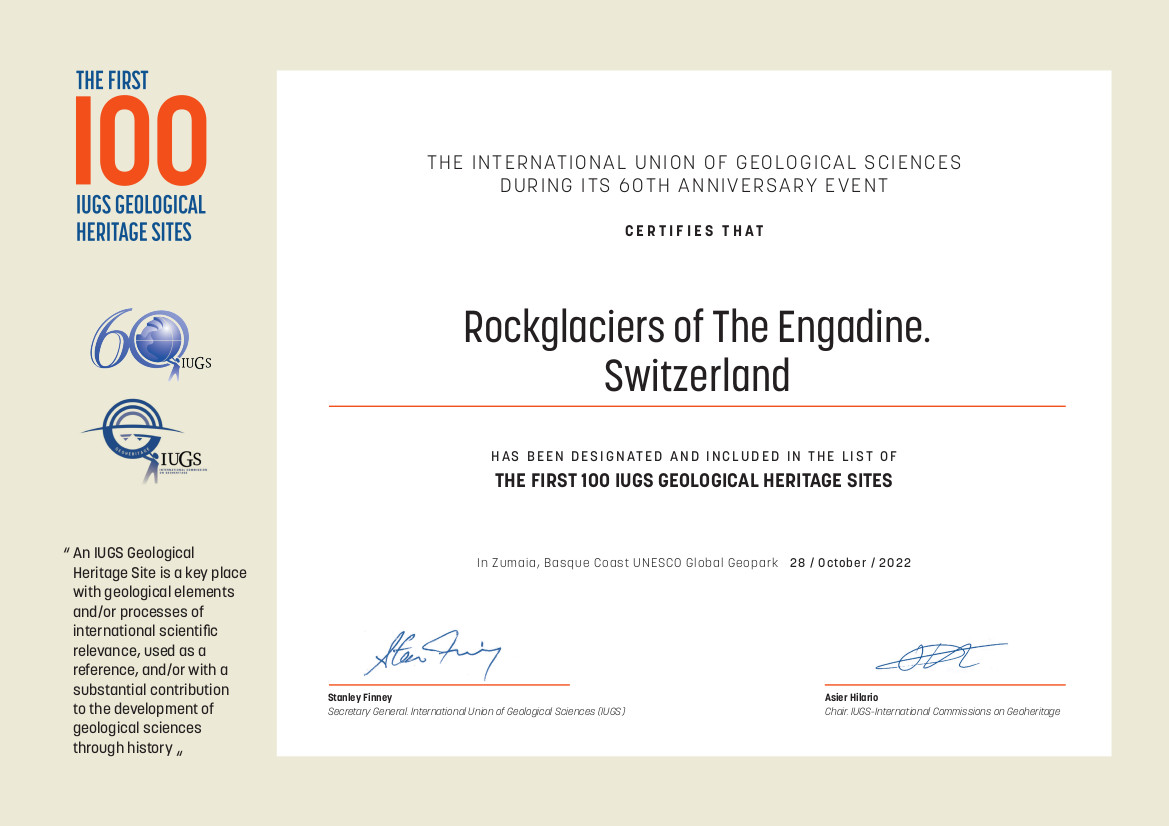Rockglaciers of the Engadine are one of 100 IUGS Geological Heritage Sites
100 geological sites from around the world are recognized as a reference for their impact in understanding the Earth and its history. One of these are the Engadine rockglaciers. The Department of Geography has a long tradition of research there.
The rockglacier Val da l’Acqua is one of the first rockglaciers described and investigated systematically (view from drone, A. Cicoira, autumn 2019).
The Engadine is one of the rockglacier hotspots in the European Alps. This is due to continental climate conditions, high elevation and high weathering rates. Engadine rockglaciers have been investigated for nearly one century. The findings improved knowledge on high-mountain permafrost, in particular on permafrost distribution, rockglacier internal structure and kinematics, and sediment transfer.
The Department of Geography has a long tradition of research in this area and is part of Permafrost Monitoring Network Switzerland PERMOS. “The Engadine rockglaciers are our outdoor labs for research in geomorphology”, says Isabelle Gärtner-Roer. “We are therefore very pleased that this is now being recognized!”. She presents the rockglaciers of the Engadine at an event celebrating the 60th anniversary on October 27 at Zumaia, Basque Coast UNESCO Global Geopark.
IUGS Geological Heritage Sites: Rockglaciers of the Engadine
IUGS 60th Anniversary Event, 25-28 October 2022, Zumaia, Basque Coast UGGp, Spain
Programme of the event
| An IUGS Geological Heritage Site is a key place with geological elements and/or processes of scientific international relevance, used as a reference, and/or with a substantial contribution to the development of geological sciences through history. List of the First 100 IUGS Geological Heritage Sites |

